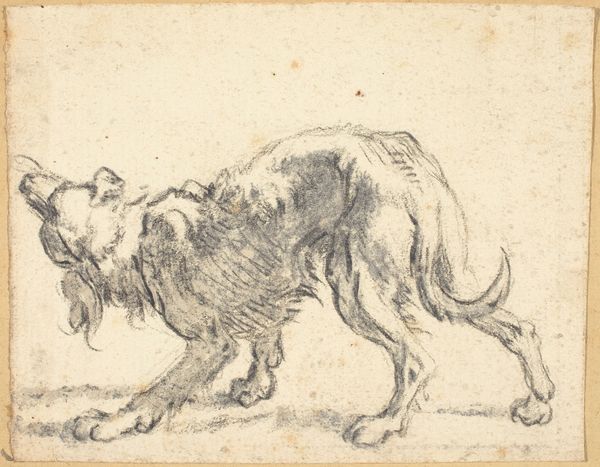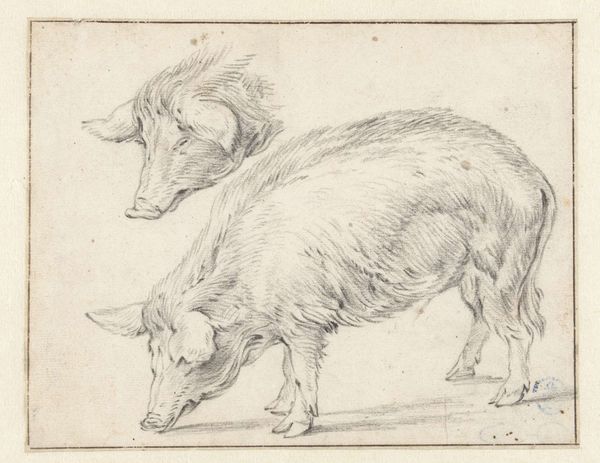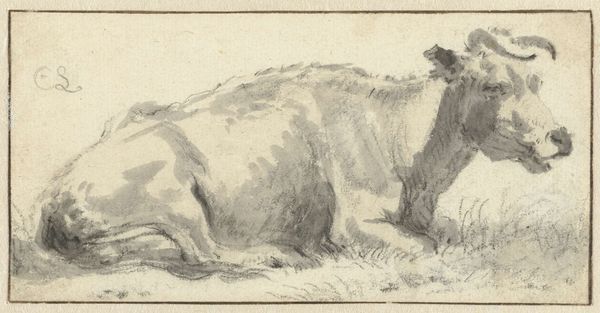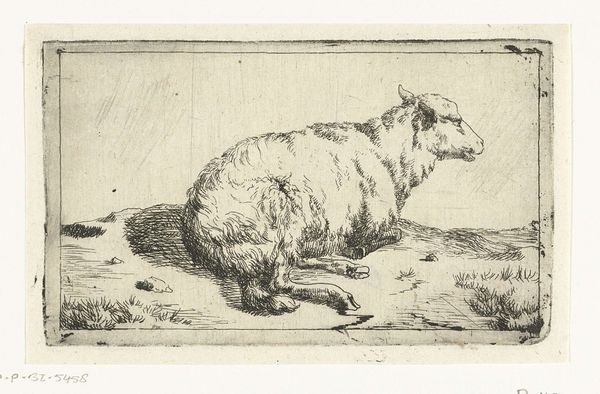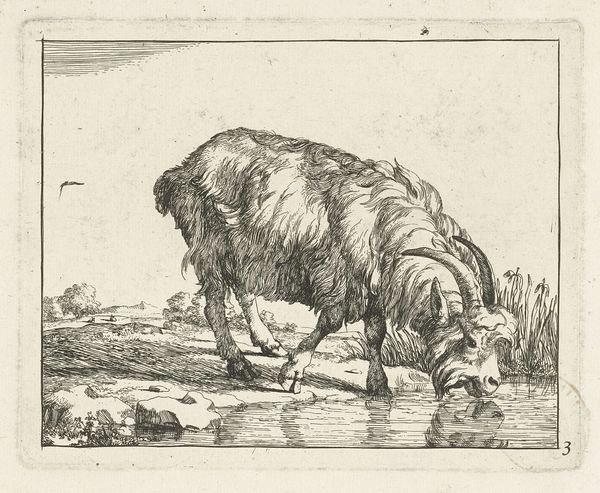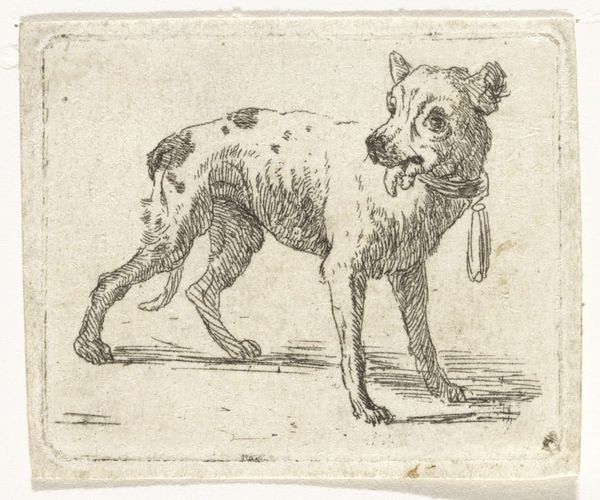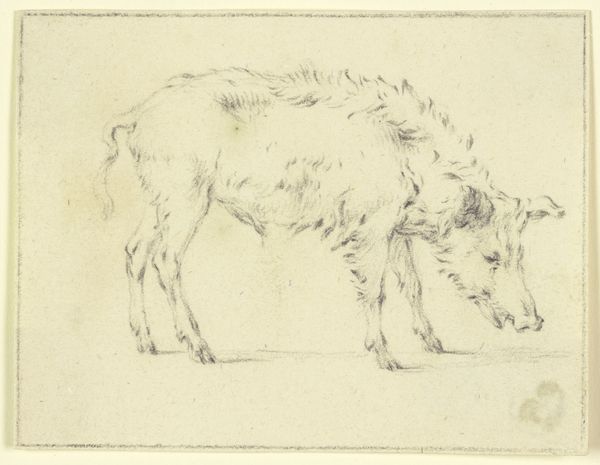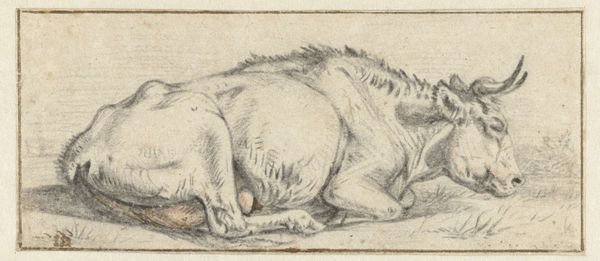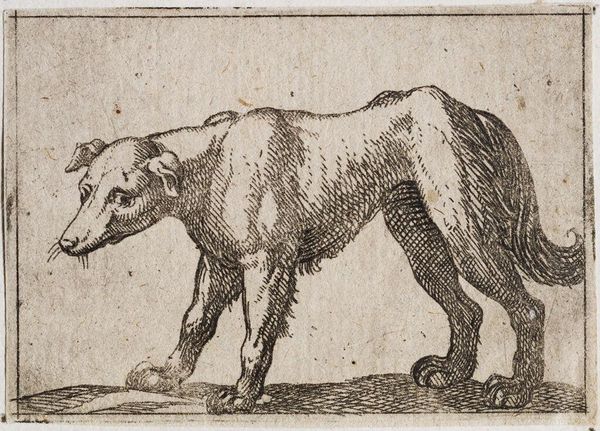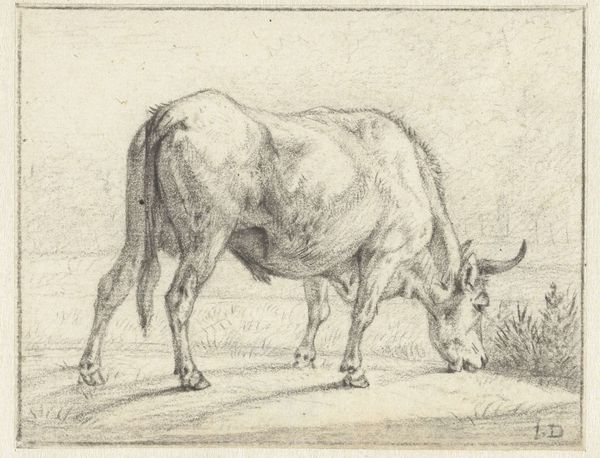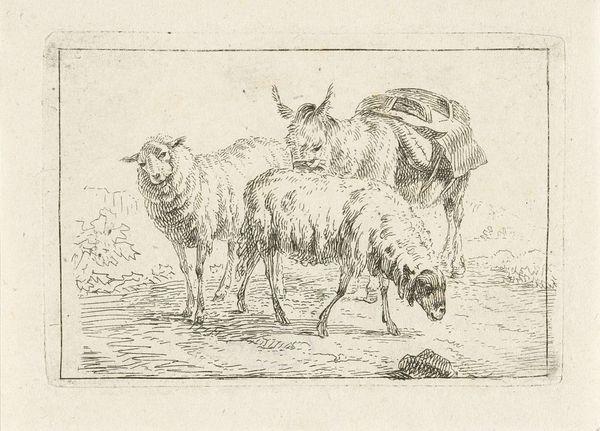
drawing, pencil
#
drawing
#
pencil sketch
#
landscape
#
pencil
#
realism
Dimensions: height 50 mm, width 73 mm
Copyright: Rijks Museum: Open Domain
Curator: Here we have "Standing Boar," a pencil drawing by Paulus Potter, created sometime between 1635 and 1654. It resides here at the Rijksmuseum. What are your initial thoughts? Editor: It strikes me as quite raw. There’s an energy in the sketchiness, a directness that transcends mere representation. The stark contrast of the pencil on paper really brings out the textures, making it almost tactile. Curator: Precisely. The drawing showcases Potter’s close observation of animal anatomy. We see this particularly in his depiction of the boar’s bristly coat and powerful stance. Consider the material context, though. Boars at the time were not only a food source but also symbols of wildness. Was Potter depicting a farm animal or evoking the untamed wilderness? Editor: Good point. Looking at the composition, it seems Potter was really focusing on form and weight. Notice how he uses hatching and cross-hatching to create volume and shadow. The way he models the boar’s musculature and the texture of its fur... it’s all about capturing the animal's physicality, the weight and density of its form in space. Curator: The medium certainly reinforces the idea of immediacy, perhaps indicating the growing appreciation for art which seemed less contrived, more from the 'real world' of experience and labour. In a society still largely agrarian, one has to wonder, to what extent was Potter democratising depictions of animals previously found mainly in tapestries or court paintings? Editor: That’s interesting. Still, I’m struck by how he managed to give this simple sketch a certain monumentality. Its humbleness and seeming modesty aside, you perceive a creature of mass, and almost threat... I'm also drawn to the line work itself. There’s an economy of line, yet such precision in suggesting form. It reveals Potter's mastery of chiaroscuro, how he sculpts form with light and shadow, creating a convincing illusion of three-dimensionality. Curator: Ultimately, a seemingly simple drawing reveals much about the intersection of art, labour, and the natural world in 17th-century Netherlands. Editor: A focused view then, into the fundamental visual building blocks used to construct our understanding. Thanks to Paulus Potter.
Comments
No comments
Be the first to comment and join the conversation on the ultimate creative platform.
